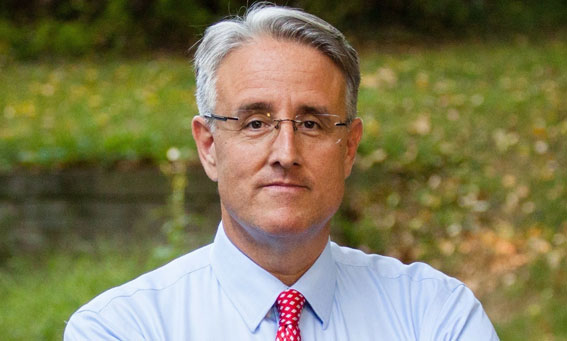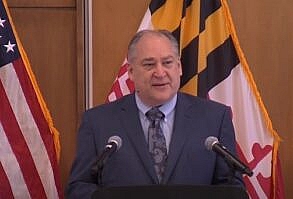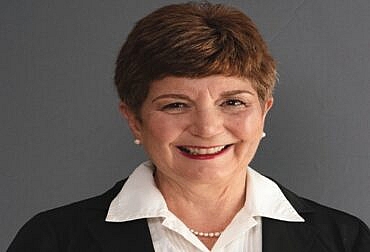Nagender Madavaram discussed with Chief Administrative Officer, Richard Madaleno about his experiences in meeting the challenges during Covid. Madaleno has been serving the County in various capacities for more than two decades. He worked for Montgomery County’s Office of Intergovernmental Relations from 1995-2002. He represented District 18 in the State Senate for 12 years. Prior to being CAO, he was the Director, Office of Management and Budget, Montgomery County. His vast experience in the administration is helping the County in a difficult time. This is the first of a 2-part transcript of the interview which covered the topics of Covid, racial equity and justice, hosing, and climate change.
Covid:
Nagender Madavaram: Congratulations, everyone is happy with your performance as CAO. You are doing wonderful job. Covid is the biggest challenge to the County in the current century. In spite of initial problems in vaccine distribution, the County successfully vaccinated 81.2% of residents which is more than national and state average. Interestingly, the County expanded food distribution system and saved the precious lives from hunger and Covid virus. What steps you took to achieve the great success?
Richard Madaleno: This administration worked hard, certainly not just me. Many of the people that work across the County Government from the County Executive to our Department Heads to frontline workers, focused in many ways to make sure we were solving as many problems within the community. I do appreciate the very kind things that you said about the administration. I am playing small role for helping this administration. I think when you look back upon all of the things that Montgomery County achieved during the pandemic, at any one point, there was always frustration about; this service wasn’t running well or people were struggling about getting appointments with the vaccine registration system. When you look back over the last year and a half, you see all of the things that Montgomery County has done, it’s truly remarkable. I don’t know if there is another local government that has been able to achieve so much during the pandemic but there are still holes. There were still things that didn’t get done but overall, it’s a remarkable achievement. Over 80% of our total population fully vaccinated that is the best large county vaccination rate in the country. Just yesterday, we’ve put more than 20 million prepared foods out into the community with our partners. We’ve distributed almost 10 million pounds of food in addition to those prepared move meals that went out.
We provided direct assistance to small businesses. We have a business assistance program which is up and running since end of March, 2020 to help businesses, especially small businesses, survive through COVID and augment the resources that are coming out from the Federal government. We have put money directly into the pockets of our working families. The county’s longstanding working families’ income supplement was broadened and expanded to cover more people, and the value of it went up. So, we are actually putting money directly into the pockets of households and individuals. We’ve been already able to put out close to $60 million in rental assistance. As a result of our efforts for getting more money, we got another $34 million from the federal government. We’re going to get probably more money from the State Government because we are able to get more vaccine for children. When you look at vaccines and you look at some of the services that we’ve done. We’ve been able to close achievement gaps between different racial groups, so that our Hispanic population, in fact is getting higher rate than the overall population numbers. We’ve been able to make sure that gap is reduced between African American population and general population in vaccination. In general, when you look back over the 18 months, it’s remarkable what we’ve done. I think you pointed this out and it’s very hard to quantify for this. We did save many lives because we were so aggressive at making sure we had the right health regulations in place. We were so aggressive and bought PPE not only to provide for our employees, but to make sure across the board that our health care providers in the county had adequate PPE. I mean we were trying to step in and use our power as a purchaser and aggregator because we have financial flexibility to get those things. You know that we were very aggressive at getting shots into people’s arms for vaccination.
Across the board, we saved people’s lives. When you look at, we are the largest county in Maryland yet we have not had the largest number of deaths. I think that’s partly due to the amazing work the County Government did and in large part due to residents, who followed the guidelines. The healthcare emergency is not just about you, but it’s about your entire community, it’s about your neighbors, about your family. We are a community that came together because of great people that live here and it’s the leadership of Marc Elrich. Unfortunately, just today I was looking at our case numbers as I speak to you on December 3rd, we’ve had the highest number of cases reported since February. Hospitalizations in Montgomery County have not knock on wood as of yet. We follow that very carefully so it would suggest that people are getting much milder cases of COVID than the time last year. A lot of that is because of our high vaccination rate. People have been getting booster shots, especially older people with compromised immune systems. Even though it’s a high case number still our case rate today is less than half of what it was this time last year in our hospitalizations.
Nagender Madavaram: Do you think that new variant, Omicron is causing this hike?
Richard Madaleno: As far as I know, 10% of all positive test samples in the State are reviewed by the University of Maryland Medical System to figure out what variants are out there. They have yet to identify that the most recent Omicron variant in the state of Maryland.
Racial Equity and Justice:
Nagender Madavaram: Racial Equity and Justice another policy decision, the County implemented. The County administration looked the Covid problem through lenses of Racial Equity and provided sufficient vaccines to Hispanic and Black populations. With the result, the County topped the nation in vaccinating minority populations. How do you feel about it?
Richard Madaleno: It’s very great success and it is a model for the nation. So fortunately, Montgomery County has long been committed to equity within the healthcare system, long time we had programs that were aimed at providing additional focus and services to the African American community, Hispanic community and Asian community. We had existing programs for those three large groups of communities within our county. So, we had a network to plugin, for example, Latino Health Initiative, a long-standing program with a variety of people around the table who are already doing intensive services within the Hispanic community. They were running clinics and helping people to access healthcare. So, we have the network to depend on and we could jump right in and then build the framework of services related to COVID. The network helped for getting out messages and information on the early part of COVID about what you needed to do to keep safe, where you could get masks, and why masks were important. So, because of the hard work that Montgomery County had been doing for years, when this challenge came forward, we were able to jump right in and use that network to facilitate services around COVID response. Communities that had not been doing that work then we had to build a fresh network. So that’s where you know our tradition, whether it was during the Elrich administration, or the Leggett administration, or the Dunkin administration this has been a long-term effort in Montgomery County and we were able to successfully build the network.
Affordable Housing:
Nagender Madavaram: Affordable housing is big challenge. What actions are required to make sure that low-income group people can live in the County?
Richard Madaleno: Still, affordable housing is an issue across the Washington region. It’s an issue in many parts of our country. One of the challenges that we face now is that the county is in many ways built out. It is then how we find additional density within our communities to come up with affordable housing. One of the things that I’ve learned from County Executive Elrich, who has been a longtime advocate for passion about affordable housing. Certainly, during his years on the Takoma Park City Council, where Takoma Park has some of the most aggressive affordable housing, preservation and protection programs in the region. Variety of tools including some rent stabilization policies, and safeguards for building construction are implemented. I think you can build five stories of stick-built housing. So, for fire safety reasons, the current restriction is 5 levels for stick-built building If you use concrete then you can go up to 21 stories in Montgomery County. Obviously, building with concrete is far more expensive. Therefore, if you are building an apartment building either to sell condos or to rent out the units you obviously have to set rents or the sale price at a way to recover your investment. The County Executive has commented that because concrete is so much expensive that developers don’t build up those taller buildings because in many parts of the county, outside of Bethesda, you can’t get the rents. The market doesn’t allow you to charge the rent in order to recoup your investment. Pieces of property, especially around Metro stations are unbuilt where you would potentially have more from an affordability standpoint, the ability to live on transit as opposed to having to buy a car and all those additional expenses.
Look, we have to be careful at not over zoning. Which in the end, results in less affordable housing from being constructed or you have to find a way for the county to step in and provide an offset to make it profitable for the developer. So, we will be up in some cases. We will be a partner and finance part of the building in order to ensure that all or some of it is remains affordable. Of course, the county has it’s a moderately priced dwelling units requirement where 15% of any residential development to be reserved for moderately priced units. The County Executive has remarked and pointed out that the income guidelines for what’s moderately priced still shuts out. Many people who need deeply affordable housing, especially people whose income is much lower than the 50% of the median income are not getting housing. It is a thorny issue of trying to figure out the interplay between land values, density allotments, zoning and affordability. I mean that one of the things that people should know that it’s fascinating about Marc Elrich, you know, he really is a smart and thoughtful person. You know that in many cases it’s easy to say affordable housing for all. He is really taking the time throughout his career and certainly, I viewed him as kind of the Executive to understand all of the facets of any issue and try to come with solution. His approach actually gets something done because he doesn’t want just talk about affordable housing. He wants to make sure there is more affordable housing while also protecting the strong quality of life in the community.
Climate Change:
Nagender Madavaram: What do you think of Climate change? How the County is addressing the issue?
Richard Madaleno: So, we have in partnership with the Montgomery County Public Schools. We have launched the most aggressive electric bus program in the country to completely electrify the MCPS bus fleet. It will take time because we have hundreds of buses, we don’t replace all the buses at once. There is a cycle to move through replacement. I think from 10 to 12 years, we will be moving away from diesel powered buses too. There are fascinating things about school buses. The school buses are different than a Ride On buses or Metro buses. As we all know, school buses spend part of every day and certainly part of every year just parked. So, we know that large bus depot right at 270 where people can see all the yellow buses during the summer months, very few of the school buses are in use. Especially, during the summer, which can often be the peak electric load and people draw electricity for air conditioners. The beauty of school buses is, all of those buses will be equipped with community batteries. They can charge themselves at night and then be available to release electricity back into the grid when there is a higher demand. We don’t need an additional power plant somewhere that run on coal or natural gas. We can avoid releasing of fossil fumes for the electricity production. When the whole fleet is electrified, this enormous battery capacity for the community during the summer months we’ll be able to release that electricity right back into grid.
We are also trying to electrify our Ride On bus fleets, obviously those buses go in and out every day. They’re not necessarily sitting around in the middle of July to put their electricity back into the grid. The school bus issue is an innovative solution to not only deal with the climate impact that’s caused by any one of those single diesel buses, it also provides additional battery capacity for the community. That’s an example of where we have been innovative and trying to partner with the school system to get this done. I think you know people look at the County Executive Marc Elrich who has been probably one of the most liberal elected officials in our county history. Marc is aggressive, trying to make sure the county gets the best value for its investments. So, we have not just partnered with MCPS we’ve also partnered with a third party, a private firm who will be actually purchasing the buses that we will lease the buses from the firm because the federal government has put out a sizable amount of tax credits for the purchase of electric vehicles and buses. We don’t pay taxes to the federal government. If we were to buy the bus directly, there’s no value to the tax credit. If we partner with this third-party business, they buy the buses. They get the tax credit. Therefore, what we leased the bus from a firm is at a cost rate. If we had bought them ourselves the County would have not got the tax credit. Marc is always so aggressive at demanding fiscal responsibility. I think it is right decision to save the taxpayers money. Some people might say that he’s a tax spend liberal but he doesn’t want to spend a dollar. I mean the guy is fiscal conservative in the way that he approaches our fiscal policies for the whole organization to make sensible decisions that cost our taxpayers the least amount of money. So, another way where he has pushed innovation onto the organization in a way that you know, traditionally we would have just probably gone out and said, let’s do it procurement. Had we procured the busses we would have not saved taxpayers money.











